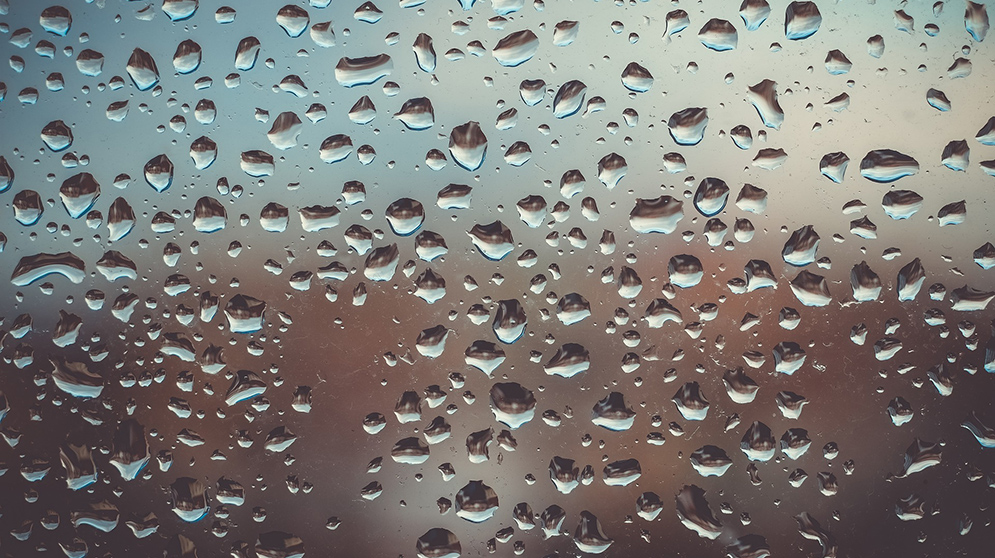The last three summers (i.e., 2017-2019) we have faced extreme humidification issues on Long Island. Humidity and heat have caused condensation issues in a variety of different types of facilities - hospitals and schools to name a few. The older building systems are failing and cannot meet the level of heat and humidity we have been encountering during the last few summers. I have visually experienced condensation forming right through the insulation on piping and ductwork. The entire environment becomes even more problematic once the moisture from the condensation is in the environment above an unconditioned ceiling or chase. It essentially becomes the equivalent of a rain forest, causing the metal decking and the sprinkler piping to sweat, and further compounding the problem.
We first started just simply removing the wet insulation and quickly installing matching new dry insulation. But with the moisture in the environment, the new insulation failed quickly, and condensation began to form. Once I realized what was happening, we couldn’t just update the insulation, we had to address the humidity as well. This basically meant we had to start from scratch.
The humidity was penetrating the building at the perimeter, essentially nullifying any work we did on the insulation systems. To put it simply, the heat and humidity was simply winning the battle. It was so powerful it would infiltrate at least 30 feet off the perimeter walls and cause insulated utilities to sweat through the insulation. Naturally, the condensation and sweating were enormously problematic because of the increased risk for mold growth and damage to the insulation and the surrounding structural areas.
This took a multi-faceted approach. Our top priority had to be decreasing the humidity that was infiltrating the building. So, we broke it down into a step-by-step strategy:
Step 1: We had to install closed cell spray foam along the perimeter of the building to shut down the warm air infiltration and eliminate the humidity that was penetrating the building envelope.
Obviously, we would have addressed the humidity first so we didn’t have to go through the exercise of removing insulation we had just installed. Stopping the humidity was the key for the most important step towards the solution. After that, dealing with removal of all the wet insulation and drying out the space. Knowing what I know now, we have to address our installation environment first and foremost to ensure a successful install.
Yes. We went back on a few projects as a team at summer’s end this year in 2019 and found that there was no issue whatsoever. One of our clients even noticed that their HVAC system was performing much better now that it was no longer battling with heat and humidity.
Our design team worked together on this with case studies from other projects. The spray foam was an important step in several of the cases, because we had limited access to some of the areas that we needed to insulate in order to shut down the heat infiltration. Then increasing the density and thickness of the insulation on the re-insulation is crucial.
We found that older buildings that had architectural design with soffits on the exterior was one major problem. All of the facilities we had this same issue with were over 30 years old. As the humidity and heat in the northeast has intensified, the building design has failed because was not built to withstand such extreme conditions. The uninsulated vented soffits were acting like open windows, allowing that hot, warm, humid air to eventually get into the space and wreak havoc the HVAC systems.
Yes, we spoke with a few. On the last few projects we have noticed a systemic change in the design and specification of the HVAC Insulation. Thickness and density demand have almost doubled on projects. The industry standard expectation of what is to be installed is no longer acceptable for many real-world applications.
The last three summers has been a problem. We had equal scope in 2019 that we did in 2018. This will be an ongoing issue in the northeast on older facilities for years to come in my opinion. Which will lead to market share growth for insulation contractors that perform repair work direct for engineering depts within facility networks.
The issue in the winter would be impossible to diagnose. It would be easier to perform this task in problem locations in the fall or winter. Unfortunately, a hospital or school needs the issue addressed on the spot, and usually problems are only discovered during the thick of summer. Which is what makes the task so daunting.

